American Agave, American Aloe, Century Plant
 |
 |
 |
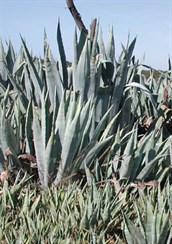
Photo: Doug Bickerton, SA Departmentfor Environment & Heritage
|

|
American Agave, American Aloe, Century Plant
Agave americana
|
| |
|
This plant has grey, sharp-tipped, strap-like leaves which form rosettes about 1.8 m wide. Its common name is Century Plant, due to the mistaken belief that it only flowers once every 100 years. In fact, after 10 years, it produces pale yellow flowers on a very tall, branched stem. Its spread is mainly vegetative, with new plants arising from stolons and from dislodged plant fragments. Commonly naturalized around old rural homesteads and coastal shacks, it has spread to form dense, impenetrable thickets along roadsides and in coastal vegetation.
|
| | HOW IT SPREADS
Cylindropuntia species are mainly established as weeds close to localities where they were formerly planted. The fruit are eaten by birds and some mammals, which effectively disperse the seed of some species over wider areas. As the stem segments are spiny they can be carried on livestock and vehicles.
Infestations can also start when live plants or their stems are dumped with garden waste. The plants disperse down watercourses when detached stem segments and whole small plants are carried in runoff water.
|
| |  | | |  | | |
Additional suggested alternatives: Chagualillo (Puya venusta), Queen of the Night (Cereus gregii)
|
|
Alternative Plants
 |
 |
 |

Photo: © immij pty ltd
|

|
Agave, Century Plant, Foxtail
Agave attenuata
Succulent Plants
|
| |
|
Upright habit on a tall stem. Heads to 0.9 m with stems up to 1.5 m. Clumping habit when young. It is an ideal specimen for pots and very popular accent plant. Extremely hardy and can withstand extremes in temperature. This specimen has high architectural appeal.
|
|
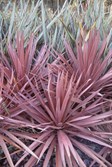
Photo: Andrew Smith, Warners Nurseries
|

|
Cabbage Tree
Cordyline australis species and cultivars
Trees and Shrubs
|
| |
|
Cordylines are hardy, erect, palm-like trees from New Zealand. They are easy care, generally unbranched and develop a broad crown of spreading, sword-like pointed leaves. Plant in a full-sun or part-shade position and protect from heavy frosts while young. There are many new improved cultivars now available. For more information visit your local garden centre.
|
|
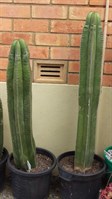
Photo:Cactus Creations
|

|
Mexican Fence Post
Pachycereus marginatus
Succulent Plants
|
| |
|
Pachycereus marginatus is a cactus known for its deurability in heat, with columnar trunks that grow slowly up to 3.5m. Stems are up to 10cm in diameter, with 5 to 7 ribs. Flowers are green, flushed with pink. Requires full sun. An excellent feature container plant.
|
|
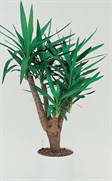
Photo: © immij pty ltd
|

|
Spineless Yucca, Soft Tipped Yucca
Yucca elephantipes
Succulent Plants
|
| |
|
A small, evergreen tree that is one of the most versatile indoor and outdoor foliage plants. It develops a thick, branching trunk reminiscent of an elephant's foot. Mid-greed leaves are leathery and finely toothed. Adaptable to a wide range of climates and conditions and is drought, salt and frost tolerant. This specimen has high architectural appeal.
|
|
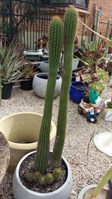
Photo: Cactus Creations
|

|
Torch cactus
Echinopsis spachiana
Succulent Plants
|
| |
|
Echinopsis spachiana grows as a columnar-formed cactus, reaching 2m high, with a diameter of 5 to 6cm. Vertical branches arise from the base of the plant. Each column has 10–15 rounded ribs. The large areoles are around 1 cm apart, and have wavy yellow hairs. The straight spines are red-yellow initially, fading to white as they age. The large white tubular flowers appear in November to January and open at night.
|
|
| |
|